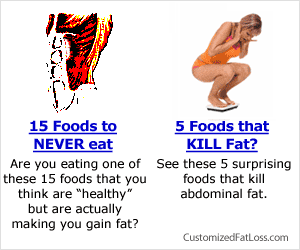Boxing For Fitness
When we look at fitness training there has been much that has changed over the years. Gyms have become more accessible for all sections of the public, with the benefits of a personal trainer being used by many. One area which has not changed is the use of boxing as an effective training technique, and in more recent times the introduction of non contact boxing for fitness.
Boxing, also called prize fighting or the sweet science, is formally structured for competition at both amateur and professional level. Bouts are categorized through weight division classifications. Competitive boxing takes great dedication from the athletes to compete as the consequences of unsuitable preparation can be devastating.
Through its stamped history and purist nature boxing provides a solid platform for exercise. The benefits of boxing for fitness are a plenty, with cardiovascular function, speed, power, agility, reaction time, strength, flexibility and coordination all variables of fitness which are trained, with weight loss and muscle tone being effective outcomes.
Before starting any exercise a full warm up should be completed to activate muscles and joints. The three main purposes of a warm are to increase body temperature as warmer muscles have more elasticity; elevate heart rate to allow as much oxygen rich blood to reach the muscles; lubricate the joints to increase range of movement. An effective warm up for boxing is 2.00 minute round of jump rope along with dynamic stretching.
Basic technique principles will need to be followed to enable an efficient workout.
Stance
Establish a comfortable position with body slightly side on, knees slightly bent, head facing forward with chin tucked in towards sternum. Feet will be 12 to 24 inches apart, back heel off the ground and weight on the balls of both feet. Toes should be pointing towards the left shoulder (for an orthodox- right handed boxer) of pad holder, bag or opponent. Both hands are at ear height, with left hand slightly more forward and elbows tucked into sides.
Jab
The jab for an orthodox boxer is a punch thrown with the left hand. Conduct an extension of the left hand, with the fist and forearm rotating, striking your target and then returning to the defensive position. Rotate at the waits with the left hip turning to the right, and back heel rocking off the ground as you throw the punch. Your head must not drift outside the boundaries of your feet as this would cause a loss of balance and therefore power. Remember to keep your right hand up when throwing a jab, as it will have a natural tendency to drop. A focus should be placed on speed when throwing a jab.
Right Cross
The cross for an orthodox boxer is a punch with the dominant right hand. Conduct an extension of the right hand, (like the jab) rotating your first and forearm, then hitting the intended target before returning to the original position. Rotate at the waist with the right hip turning forward and swivelling of the ball of feet. Try not to drop the right shoulder as it protects the chin, producing a powerful and long punch which is established from a snappy hip turn. Remember to keep your left hand up when throwing a right cross.
Uppercuts
Uppercuts, both left and right hand, are produced via coming out of a squatting like position, with arm flexed and palm of clinched fist facing the boxers own chest through the duration of punch.
Hooks
Hooks are predominantly thrown with the left hand of an orthodox boxer. The arm conducts a hooking motion with a focus on an almost full extension at the elbow- to create leverage- whilst maintaining the elbow in a high position. The fist maintains its position throughout the punch with attention being paid to the knuckle part of the glove connecting to the intended target- rather than an open hand, or slap.
The use of boxing for fitness can be completed through a series of drills and exercises or through rounds where the different punch combination’s and techniques are applied. This is either completed on a heavy bag or with a partner using hand pads.
Combination’s
A combination is a series of punches- or moves- conducted in a consecutive manner. Combination’s are a great way of training for coordination improvements- being a neurally challenging movement – a quality of fitness often overlooked, despite its vital importance. Combination’s can start with a simple Jab-Cross, and build up to a five punch succession of Jab-Cross-Left Uppercut-Cross-Left Hook. Here are some more suggested combination’s:
(All combination’s in relation to orthodox boxer)
Jab- Jab- Cross
Jab- Cross- Left Hook
Jab- Cross- Left Uppercut- Right Uppercut
Left Hook- Right Uppercut
Jab- Cross- Duck- Left Hook
Duck- Cross- Left Hook
High Left Hook- Low Left Hook- Cross
Pyramid
A boxing pyramid relates to a pyramid in volume of punches, for example: 10, 20, 30, 20, and 10. You can do this with any number, as well as variations of punches such as straights, uppercuts and hooks. Pyramid drills will not have an intense focus on technique as the previous combination punches; due to the high volumes of punches making a pyramid drill an aerobic based endurance exercise.
Circuit
Circuit training can be easily applied to a boxing style of training. It can include exercises not directly related to boxing or exclusively boxing exercises. An example of a boxing circuit would be:
Dumbbell punches x 20
Burpee x 10
Bag punching x 20
Star jumps x 20
Shadow punches x 20
Depending on session plan and time, you would be able to complete the circuit 2 to 5 times, with a 30 to 120 seconds break between laps.
Including the lower body
For an all over body workout it is simple to add lower body exercise to your boxing routine. Include 10 squats or star jumps between sets of combination’s, or a 10 meter lunge walk with 10 start jumps between levels of a boxing pyramid. While you are conducting the leg exercise your upper body is recovering and vice versa.
Rounds on the Pads
Rounds on the pads are best done with a partner or trainer who acts as the ‘boss’ by calling the shots. Your partner will randomly state a certain punches or combination’s through rounds of 1 to 4 minutes in duration. Initially the pad holder and boxer may start out with punches being verbally called out, and then as the partnership develops the boxer is able to throw punches as the pads are placed in specific positions.
Facilities & Equipment
An advantage of boxing fitness is the minimal facilities and equipment that is required. Equipment can start with your bare hands with the above listed drills and exercises conducted through shadow boxing. Further equipment can be utilised in boxing gloves, heavy bag, hand wraps and hand pads. Facilities used are generally a boxing gymnasium, aerobics room or undercover shed, however if these facilities are not readily available then training can be equally effective at an oval or park.
Whether you are training to be a boxer, an elite athlete, general fitness enthusiast or just looking to begin a form of training for cardiovascular improvement, weight loss and general well being then boxing fitness is your ideal solution. It may be seen as old fashioned however boxing fitness training is very much the original and still one of the best forms of fitness training.
Stone Active (http://www.stoneactive.com) is a one stop resource for fitness training information. The website is developed by international and award winning personal trainer Gavin Stone. The feature of Stone Active is the fitness video series which provides viewers with clear and concise concepts and ideas for fitness participants to include in their fitness training regime. Visit: http://www.stoneactive.com
More Fitness Articles






-SMALL.gif)
